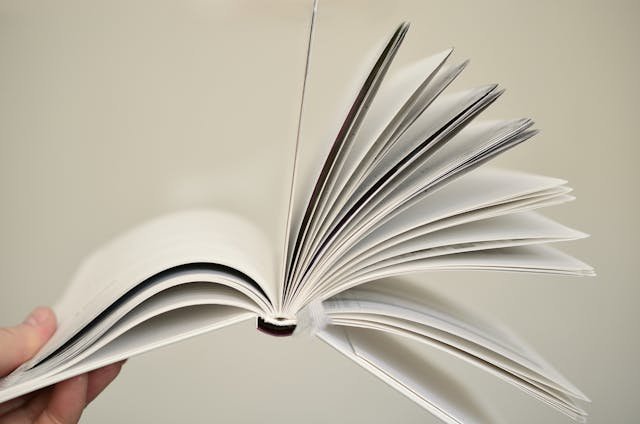Summary: Technical documentation is essential for helping users understand, operate, and troubleshoot products or services. This article discusses the structured review process, which includes several levels to ensure accuracy, clarity, and usability. The process starts with the author review, checking for grammatical errors, logical flow, and adherence to guidelines. Peer review follows, where colleagues validate technical accuracy and clarity. Next is the technical review by subject matter experts, ensuring correctness and relevance. Editorial review focuses on language, grammar, and style. Usability review tests user-friendliness, and the final review confirms readiness for publication. Best practices include using checklists, adhering to style guides, and automating parts of the process.
Introduction
Technical documentation is essential for providing users with the necessary information to understand, operate, and troubleshoot products or services. To ensure accuracy, clarity, and usability, technical documentation undergoes a structured review process. This article explores these review levels, their purposes, and how they contribute to the overall quality of documentation, supported by insights from industry standards and expert opinions.

Levels of Review
1. Author Review
The initial review phase is conducted by the author of the document. This self-review focuses on ensuring that the content meets the initial requirements and adheres to the project guidelines. The author reviews their own work to correct obvious mistakes and improve clarity. This phase focuses on catching grammatical errors, ensuring proper sentence structure, and aligning the document with the overall layout and style guidelines. By viewing the document from an end-user perspective, the writer can make necessary adjustments to enhance readability and usability (Cflow) (Cflow).
- Purpose: Ensure completeness and initial adherence to guidelines.
- Key Activities:
- Checking for logical flow and consistency.
- Verifying technical accuracy.
- Self-editing for grammar and spelling errors.
According to technical writer Sarah Maddox, in “Tips for Effective Technical Writing.” (ffeathers), self-reviews help authors refine their ideas and improve the overall quality of the content before external reviews .
2. Peer Review
Peers or colleagues of the author conduct this review. The peer review aims to identify any technical inaccuracies and provide feedback on clarity and comprehensiveness. In the peer review phase, colleagues within the technical writing team or other departments review the document. This phase ensures that the content is relevant and logically structured. Peer reviewers provide feedback on the document’s flow, comprehensibility, and the adequacy of the information presented. This phase is crucial for refining the document’s content before it moves to more specialized reviews (Cflow).
- Purpose: Provide technical validation and improve content clarity.
- Key Activities:
- Technical verification of the content.
- Ensuring the document meets the intended purpose.
- Providing suggestions for improvement.
A study published in the Journal of Technical Writing and Communication, “The Role of Peer Review in Technical Documentation.” (JTWC), found that peer reviews significantly enhance the technical accuracy and readability of documentation .
3. Technical Review
Experts with deep knowledge in the relevant field review the document. This level ensures that the content is technically accurate and relevant to the target audience. Subject matter experts review the document to verify technical accuracy and completeness. SMEs are individuals with in-depth knowledge of the product or system being documented. Their input helps ensure that the documentation is factually correct and that all necessary technical details are included. This level of review is essential for maintaining the document’s credibility and reliability (Cflow).
- Purpose: Validate technical accuracy and relevance.
- Key Activities:
- In-depth technical validation.
- Ensuring the content addresses the needs of the target audience.
- Recommending any necessary technical additions or changes.
- Reviewers ensure that all information is accurate, up-to-date, and complete.
- Feedback is focused on technical correctness and relevancy.
As noted by industry expert Tom Johnson, in “The Importance of Subject Matter Experts in Technical Writing.” (I’d Rather Be Writing), SME reviews are crucial for ensuring that complex technical information is accurate and reliable .
4. Editorial Review
Professional editors review the document for language, grammar, style, and formatting. This phase ensures that the document is professional and easy to read. The editorial review focuses on enhancing the quality of the writing. Editors check for adherence to style guides, consistency in terminology, and overall coherence of the document. This phase ensures that the document maintains a professional tone and is free from stylistic inconsistencies. Editorial reviews are vital for producing polished, high-quality documentation (Cflow).
- Purpose: Ensure language accuracy and adherence to style guides.
- Key Activities:
- Correcting grammatical and typographical errors.
- Ensuring consistency in style and formatting.
- Enhancing readability and flow.
The Chicago Manual of Style, in “Editorial Standards and Practices.” (Chicago Manual of Style), emphasizes the importance of editorial reviews in maintaining high standards of writing quality and consistency .
5. Usability Review
This review is conducted to assess how easily the target audience can understand and use the document. It often involves user testing and feedback sessions. Usability review involves individuals who have a vested interest in the documentation but may not be directly involved in its creation. These stakeholders can include project managers, marketing teams, and even end-users. The goal of this review is to ensure that the document meets the needs and expectations of all interested parties and that it aligns with the overall objectives of the project or product (Archbee).
- Purpose: Ensure the document is user-friendly.
- Key Activities:
- Conducting usability testing with a sample of the target audience.
- Gathering feedback on the document’s clarity and usability.
- Making adjustments based on user feedback.
According to usability expert Jakob Nielsen, in “Usability 101: Introduction to Usability.” (Nielsen Norman Group), usability reviews are essential for identifying and addressing user experience issues in technical documentation.
6. Final Review
The final review is a comprehensive check that ensures all previous feedback has been addressed and the document is ready for publication. This phase involves a thorough verification process, where reviewers confirm that all comments from earlier review phases have been addressed and that the document is free from any remaining issues. Final reviewers perform a detailed examination of the document to ensure it is polished, professional, and fully prepared for its intended audience.
- Purpose: Confirm readiness for publication.
- Key Activities:
- Verifying that all review comments have been incorporated.
- Conducting a final check for any remaining issues.
- Approving the document for release.
Final reviews serve as the last line of defense against errors, ensuring that the document is polished and professional, meeting high standards of quality and accuracy before it is released (Cflow) (Cflow) ( Technical Communication).
Additional Review Type
Compliance and Legal Review
For certain types of documentation, especially those related to regulatory standards or legal requirements, a compliance review is necessary. This review ensures that the documentation complies with relevant laws, regulations, and industry standards. Legal experts may be involved to verify that the document does not contain any content that could lead to legal issues (Cflow).
Best Practices for Effective Reviews
To streamline the review process and enhance the quality of technical documentation, several best practices can be followed:
- Develop a Review Checklist: Create a checklist to ensure all critical aspects are covered during each review phase. This checklist should include items such as accuracy, consistency, usability, and compliance (Cflow).
- Build Accountability: Make reviewers accountable for their contributions by tracking changes and ensuring each reviewer signs off on their part of the review. This helps maintain a high standard of quality and ensures thoroughness in the review process (Archbee).
- Use a Style Guide: Consistency in terminology, formatting, and style can be maintained by adhering to a predefined style guide. This ensures that the document is cohesive and professional (Cflow).
- Automate Where Possible: Leverage documentation software to automate parts of the review process. Tools can help manage workflows, track changes, and ensure timely reviews, making the process more efficient and less prone to human error (Cflow).
Conclusion
A structured and multi-level review process ensures that the content is accurate, clear, and user-friendly. Each level plays a vital role in enhancing the document’s quality, ultimately leading to better user experiences and more effective communication. By incorporating best practices and leveraging the expertise of various reviewers, organizations can produce high-quality technical documentation that meets the needs of their users and supports their products or services effectively.




0 Comments